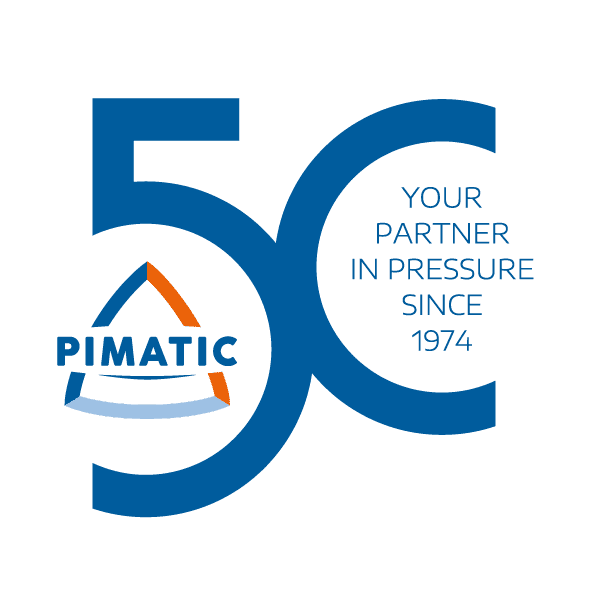
It took a lot of courage, determination and entrepreneurship to start Pimatic’s success story. And a touch of sheer madness. Tapio Heino and Martti Pulli had worked for a few years in the same workplace and partly in the same tasks in the hydraulics industry, when the idea of their own company was born.
– We started with completely customer-tailored products. The operation started on Valentine’s Day in 1974 in a 420-square-meter rental hall built by Huittinen municipality, which was a town at the time, Tapio Heino, who is now retired, says.
Huittinen was chosen as the location due to its central location and good transport connections.
– We spread the map of Finland and located on it the possible offices near the factory and the most central customers. Huittinen was the right choice. At that time, the area was still completely rural, and the local landowners were not very happy when we gathered good sled men to work, Heino recalls.
In 1979, Pimatic already had thirty employees. The rental space had made it possible to invest all available capital in growing and developing the business.
– During the founding phase, owners sold their own houses and maximum capital financing was obtained from the bank. The state-owned Industrialization Fund also supported our operations. Little by little, the company and the products became better known and it helped in growing the business.
Learning pneumatics from the Germans
Heino’s path to becoming the founder of a company that manufactures compressed air valves was not exactly a childhood dream, let alone a carefully planned intention. In the 1960s, the industry became a rising boom. Heino completed his technical studies in Pori and was among the first to graduate as an engineer.
– In the studies, we were introduced to various fields of technology, but hydraulics and pneumatics technology were only covered superficially. After graduating, I got a job at Wärtsilä’s Kotka factory. There I was introduced to pneumatic technology by a German engineer. While co-working with him, I gained immeasurably valuable experience and know-how in the field, Heino says.
In Kotka, the job description mainly included equipping war reparation ships, and at the same time Heino familiarized himself with companies operating in the field of hydraulic and pneumatic technology. Already at that stage, an analysis was made of how things were handled in other companies.
– I was about to change jobs and Martti flashed that what if we set up a company together. We brainstormed these ideas together over several weekends, and we came to the conclusion that a completely domestic product would be more productive than an imported product, Heino says.
Imported products and parts had delivery times of several weeks, even months. From the beginning, Heino and Pulli’s goal was to speed up the delivery of finished products to the customer.
– The manufacturing time of one cylinder in our production was about two to five hours. It promised customers less waiting and downtime compared to waiting these parts from elsewhere of the world.
A way of doing things – an asset then and now
At the beginning, it was difficult for the customers to understand and believe that a high-quality and functional product would be produced in their home country on a fast schedule. The way of working was Pimatic’s biggest asset from the beginning. And it still is. If something is not ready, it is designed and manufactured as quickly as possible into a product that best serves the customer’s needs.
– Pimatic’s products have one unifying factor. They are always in use in production equipment and lines that are almost constantly in use. There is no time to wait for replacement parts, the machines and, in the worst case, the entire production have to be stopped when something breaks down, Heino says.
The name Pimatic is international and memorable, even though the market was mainly in Finland during the founding phase. But where did the name come from?
– During the founding phase, the town officials insisted that the company’s official name had to be included in the official papers. There seemed to be company names including “automatic” and “safematic” around. I had a Finnish name, Paineilmamatic, in mind, but it was too long. I took the letters P and I from compressed air in Finnish and put “matic” after it, says Heino.